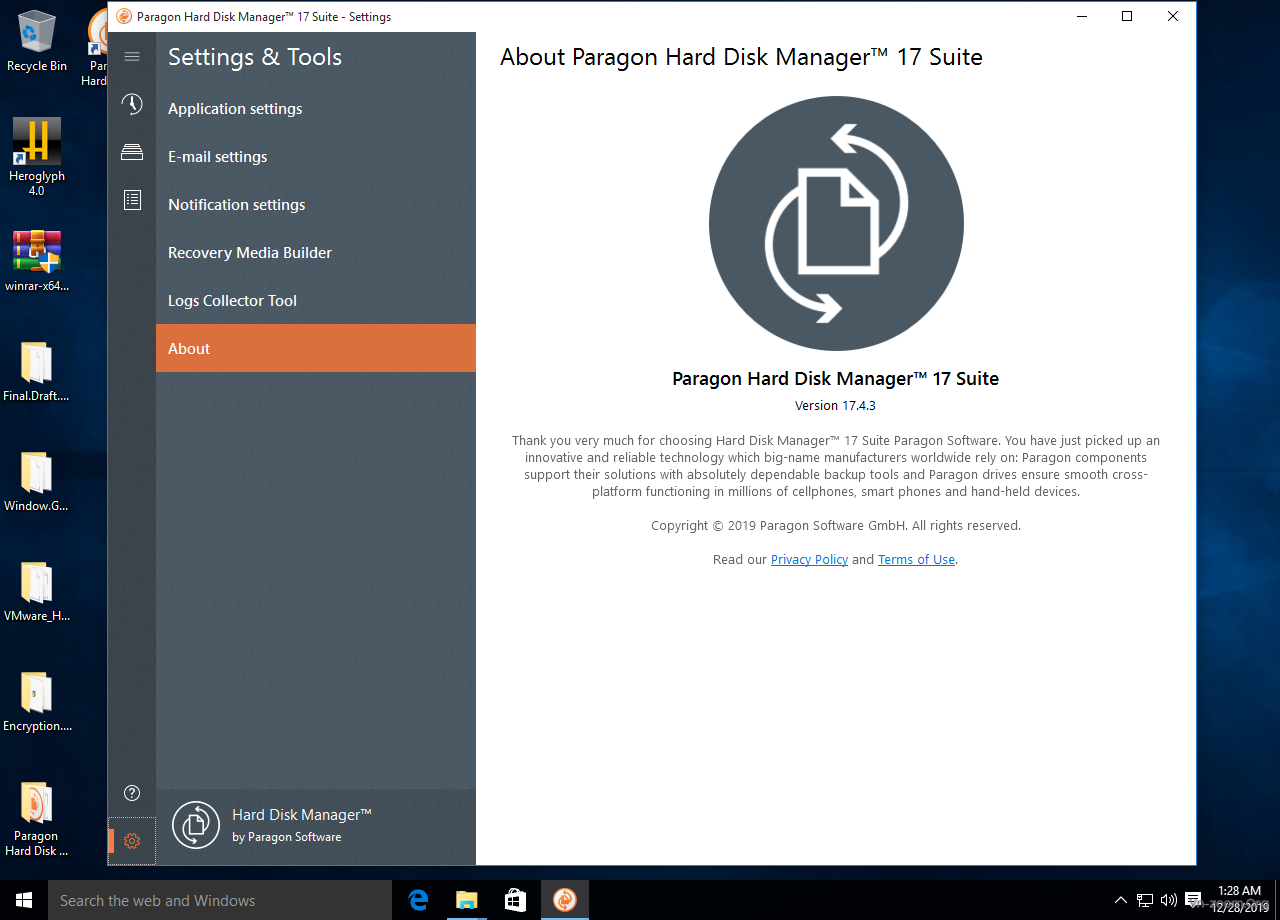
- #Paragon hard disk manager convert dynamic to basic how to
- #Paragon hard disk manager convert dynamic to basic install
- #Paragon hard disk manager convert dynamic to basic software
- #Paragon hard disk manager convert dynamic to basic free
- #Paragon hard disk manager convert dynamic to basic windows
The USD 53.96 plan comes with lifetime upgrades and technical support. It has partition recovery options as well. In addition, you can change between primary and logical partitions according to need.

For instance, it can convert MBR disk to GPT, NTFS partition to FAT32, basic disk to dynamic without any data loss. Besides, it has quite a few conversion options at hand. It is powered with system migration, disk, and partition cloning. Similar to Disk Director, this disk management utility can perform all default disk partition functions and then some. AOMEI Partition AssistantĪOMEI partition assistant is a powerful disk partition software. One can try Acronis disk director for up to 30-days for free. In addition to the auto-optimization of hard disk space, you can combine the left-over space from up to 32 physical disks into one logical volume. It can also convert disks from basic to dynamic.
#Paragon hard disk manager convert dynamic to basic windows
Similarly, volume recovery is capable of recovering partitions (lost or deleted ones) even if your Windows fails to boot. It has plenty of features to get you through any bad day.Īpart from the regular format, delete, shrink, and extend, Disk Director has disk cloning and volume recovery options.ĭisk cloning–as you might have guessed it–is a way to copy your entire hard disk into a separate drive. ACRONIS Disk DirectorĪcronis disk director is a multi-purpose disk management utility.
#Paragon hard disk manager convert dynamic to basic software
So let’s check out some disk management software for an efficient and safe hard disk partition. For instance, there is no one-click way to undo a partition operation. While this process is easy, dedicated software brings much more functionality than the default windows disk management utility. Click Next.įinally, click Finish at the subsequent screen. However, you can enter anything in the Volume label tab. If you are a regular user, leave those options as-is, they’re fine. Further, you can change a few more attributes for the new volume. You can assign a drive letter to the new partition. Subsequently, enter the desired capacity for the to-be-made partition. So, right-click the Unallocated space and click New Simple Volume.
#Paragon hard disk manager convert dynamic to basic free
Afterward, one has to carve out a partition from this free space. Now the shrunk space will be shown as Unallocated volume. For instance, I have entered 102400 MB (100GB) to shrink. You can enter the desired capacity for the new volume. The subsequent pop-up will show the maximum available space to shrink. Afterward, right-click the partition (the one with the extra space) to shrink and select Shrink Volume from the dropdown. Next, click Disk Management from the right. Then type compmgmt.msc and press Enter or click OK. Open the Computer Management console by pressing Windows key + R.
#Paragon hard disk manager convert dynamic to basic how to
How to Partition in Windows 11 Manually Step 1 Data on other partitions will be untouched in most cases.įirst, let’s check out the traditional way of doing it. The other advantage of partitioning the hard disk is that if you ever need to reinstall or reset your operating system, you will only lose the data in the partition that has the OS in it. You can back up only necessary files, leaving aside the applications and system. In addition, partitioning assists in the backup process.
.jpg)
#Paragon hard disk manager convert dynamic to basic install
The primary aim of disk partition is to point Windows (or any operating system) to a location for system installation.īesides, you must partition the hard drive if you wish to install multiple OS in it.

For instance, Windows calls its partitions C drive (C:), D drive (D:), E drive (E:), and so on. So, disk partition is a simple process of dividing your hard drive into volumes of a specific size.Įach partition is then assigned a letter within the operating system. To divide it further, one needs to do disk partition, manually or with a utility. And two other small partitions–system reserved and for recovery. The partition hosting the operating system (OS) is given the letter C, calling it C Drive. Usually, factory-shipped Windows computers come with just three partitions. It becomes easy to segregate the contents, and a partitioned drive allows easy recovery if anything goes wrong. So, it’s best to partition your hard drive correctly. It can get corrupted, taking away all your data, installed applications, and anything stored with it. Disk partition is necessary for the effective use of your hard drive.Īnd things could go wrong at any moment. Whoops! The same thing can happen to a hard disk without any partition.Įverything on one single-giant volume it’s like a toddler’s way of storing things. Imagine your refrigerator without any shelves.


 0 kommentar(er)
0 kommentar(er)
